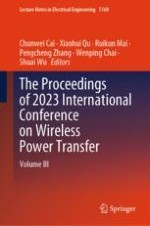This book includes original, peer-reviewed research papers from the 2023 International Conference on Wireless Power Transfer (ICWPT2023), held in Weihai, China. The topics covered include but are not limited to: wireless power transfer technology and systems, coupling mechanism and electromagnetic field of wireless power transfer systems, latest developments in wireless power transfer system, and wide applications. The papers share the latest findings in the field of wireless power transfer, making the book a valuable asset for researchers, engineers, university students, etc.
